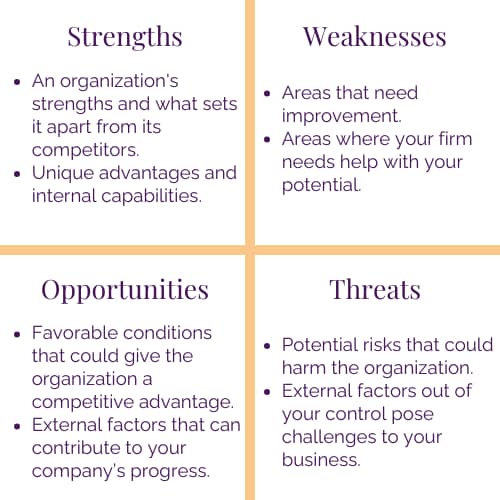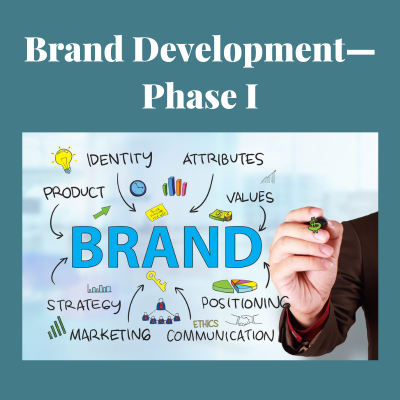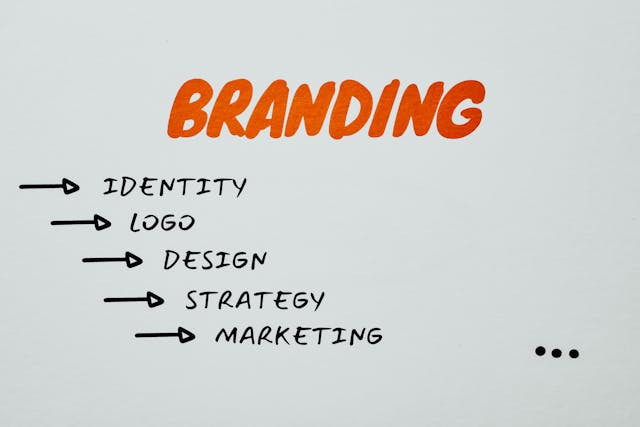Brand Development—Phase I
By: Colleen Atwood - Virtual Assistant & Editor
"A brand for a company is like a reputation for a person. You earn a reputation by trying to do hard things well."
Jeff Bezos- Businessman
In the Overview of Brand Development blog (dated 2/26/24), we introduced brand development, its phases of advancement, and how to integrate the brand strategy framework to help make the entire process smoother.
Our goal today is to work through Phase I—Team Development & Business Analysis. We evaluate each step (or method) in detail to help explain the technique and why it is crucial for your business’s future. The entire process for the first Phase includes a set of worksheets your firm can fill in with the information you find during your research.
What is Brand Development?
Atwood LLC defines brand development as creating, refining, managing, and monitoring the firm’s communications and distinctive market assets. Consequently, businesses and authors should view the brand as something other than a simple name and logo; it includes everything from internal and external communications to the physical and digital marketing assets used to tell the brand’s story to potential clients. In other words, the brand takes a life of its own and helps shape how clients and other stakeholders view the organization.
The brand development process is complex and involves a team from across the organization to help find the required information, how to use it, and the collateral the firm will create to resonate with the target market or markets. For smaller firms and authors, the process can take much more time and tends to be an overwhelming experience.
Our goal is to approach brand development in phases (or stages) to help clarify the process, build on the prior information, and help guide your efforts as you learn more about the company and how to express essential information to your target audience.
Each Phase in brand development aims to build upon the information learned in the prior exercise. For small businesses and authors who are just beginning the brand development process, the breakdown is as follows:
- Phase I—Team Development & Business Analysis
- Phase II—Audience Analysis
- Phase III—Brand Positioning
- Phase IV—Consistent Messaging & Visual Style
- Phase V—Launch & Evaluate the Brand
The first two phases help a firm create the foundation that dictates everything applied to the final three phases. Once companies complete both, they can implement the brand strategy framework to help design the final three.
Phase I—Team Development & Business Analysis
Phase I has four steps, each building upon the prior information found: (1) create a brand development team, (2) create or update your firm’s company statements and brand promise, (3) research your competitive landscape, and (4) complete a business environment analysis.
Create a Brand Development Team
Medium and large organizations have a wider employee pool to draw from to help create a brand development team. However, smaller companies and authors typically have one or two people who must make all the decisions, which takes time away from their core competencies. We explore both perspectives.
Brand Team
Firms create a brand team that oversees the creation, documentation, and improvement of the company’s brand throughout its lifetime. The brand team applies a focused (yet thorough) approach to building the brand and ensuring employees understand how to present it to clients, vendors, and stakeholders.
The primary areas of focus for a brand team include:
- Linking the business’s goals to the brand’s goals.
- Championing the brand.
- Creating a culture that mirrors the brand’s values.
- Overseeing the brand identity and assets.
- Sharing brand knowledge with the next generation of employees.
When creating a brand team, companies should always include employees from every level of the organization—from each department to management and executives—to get the broadest possible number of suggestions and background information. By doing so, companies get innovative ideas from varying perspectives, skill sets, and backgrounds.
In larger firms, a brand team might be significant, versus a smaller firm where there might only be four to six participants in the team. Regardless of size, the following suggested roles (and their primary duties) for the brand team include: (1) Chief Brand Officer, (2) Chief Marketing Officer, (3) Creative Director, (4) People Operations Representative, (5) Brand Analyst, and (6) Communications Lead. (Note: In smaller companies, more than one individual often undertakes dual roles.)
- Chief Brand Officer (CBO). One of the most crucial traits of a good leader is their willingness and ability to empower those around them. A brand manager’s primary responsibility is to define, nurture, and safeguard a company’s brand identity. They must develop and execute brand strategies for the firm while ensuring that employees always uphold the brand’s core values, messaging, and visual identity.
- Chief Marketing Officer (CMO): This position leads the development and execution of marketing plans, manages content and brand messaging, coordinates teams and resources, oversees product launches, and leverages data-driven insights to inform decisions. It requires a seasoned professional with a proven ability to drive results and innovation, manage teams, and align goals.
- Creative Director. This role involves documenting brand guidelines, developing creative brand collateral, keeping a consistent look and feel, and managing budgets, timelines, and client relationships.
- People Operations Representative. The representative helps the company adapt to new cultures and promotes it positively to clients. They create a positive employee experience, manage communications, enhance engagement, and foster connections. They oversee Diversity, Equity, Inclusion, and Belonging initiatives, manage performance, and offer employee development opportunities. They also recognize employee milestones and celebrate achievements.
- Brand Analyst. This job involves implementing KPIs and metrics to monitor a brand’s strategies, reporting results to the CBO and CMO, performing market research, offering analytical insights, developing innovative ways to market the company, and training sales professionals.
- Communications Lead. The company needs someone to document every step in the brand development process. This individual will develop a brand knowledge management system that all employees can access and provide educational resources to those who require information about the materials. The chosen person will supervise the company’s communication strategies and initiatives and develop and execute communication plans accordingly.
Small Businesses & Authors
Solopreneurs, freelancers, and anyone else offering their services to clients should participate in brand development. So, too, should authors. However, because a single person is doing all the research, making decisions, and documenting everything, the entire activity might feel unattainable and not worth the effort.
To help create a sense of order for this endeavor, small companies and authors may use brand development worksheets to notate their thoughts, answer the questions posed, and make final decisions that directly affect later phases.
Atwood LLC updated certain aspects of the company’s brand to show the process from beginning to end. (Note: To see the results, watch the website for new additions as each Phase’s blog appears.)
The four worksheets we explore today include (1) Company Vision, Mission, and Core Values; (2) Brand Vision, Mission, Core Values, and Brand Promise; (3) Competitive Landscape; and (4) Business Environmental Analysis.
Larger businesses also create worksheets to follow, which may require drastically different questions based on the industry and type of company. Today’s worksheets allow a business or author a framework to follow to begin building (or updating) their brand.
Company Statements & Brand Promise
The first two worksheets help companies understand their Company (and Brand’s) Mission, Vision, and Core Values. These worksheets require lengthy discussions, research, and in-depth thought by the brand team to gain a deep understanding of the company at the most profound level. Once the organization answers these questions, they can apply that knowledge to their target audience by differentiating themselves from other competitors in the market.
One key reason a company must fully understand and articulate its position is that the answers found within the worksheets help to direct the forward momentum of the brand development process. Companies use these statements to direct how clients see their organization while guiding employees on how to act when interacting with the public. These statements ensure that the messaging the firm wants stays consistent, regardless of the messenger.
Before we delve into the worksheets, let me explain the difference between the Company and Brand Statements your firm will decide. The Company Statements tell customers, vendors, and stakeholders what your firm is about, while the Brand Statements guide and encourage employees’ actions internally. Although one is more for external purposes, the internal aspect is critical. Creating Company and Brand Statements allows businesses to ensure messaging, organizational assets, and all strategies align from the corporate and project levels.
(Note: Please remember that when you fill out these worksheets, you may need to complete other sections before arriving at the outcome. The worksheet has questions divided into steps and sub-steps to help you find the specific statement you need. We recommend creating a separate document for notes, ideas, and possibilities.)
The Company Mission is a statement that defines a business’s reason for being, its objectives, and its goals. To create a company mission, your team needs to follow four stages: (1) defining what the company does, (2) discovering the company’s core values, (3) linking the company’s products or services to its values, and (4) combining all the statements.
Company Vision is a statement that defines the company's future and provides direction to corporate-level strategy. To create the Company Vision, your team needs to answer a few key questions, including (1) identifying the internal and external stakeholders, (2) starting the process with a list of keywords that cover different aspects of the company, (3) answering foundational questions about the company, (4) prioritizing the answers, (5) writing a complete long-form statement of the vision, and (6) evaluating the new vision by asking four specific sub-questions.
A Company’s Core Values refer to its fundamental beliefs and principles that it follows religiously and expects its employees to adhere to as well. To identify or refine the core values of a firm, follow these steps: (1) brainstorm a list of principles that hold significance for your organization; (2) group and eliminate similar principles or those that do not represent the company's values; (3) distill the essential principles that are critical to success; (4) draft the values; and (5) finalize the core values and include the information in the Company Mission worksheet as needed.
Employees use The Brand Mission framework to make decisions or represent the firm. To create the mission, follow these steps: (1) start with your brand story by jotting down everything you feel is essential to know; (2) identify the core elements of the story; (3) write your statement; and (4) evaluate the statement against specific questions related to passion, moral or ethical codes, and public perception.
Brand Vision is a concept or image of a brand's future. To identify this vision, the brand team needs to do the following: (1) write down the company's goals for the next five to ten years; (2) brainstorm the emotions and transformations the target audience will experience when the firm achieves those goals; (3) ask themselves what impact they want the brand to have on the audience, industry, or world; and (4) write a sentence or two that encapsulates the vision as best as possible.
The Brand's Core Values stand for the way customers perceive a company. Considering how customers view the company is crucial, let us answer the following questions to clarify: (1) What does our company stand for? (2) What is our purpose? (3) What are our core beliefs?
The Brand Promise is a company's commitment to its customers and services, directing its marketing efforts. To discover the Brand Promise, consider the following: (1) focus on your audience and clearly outline your commitment; (2) envision how you want interactions to go at every touchpoint with your customers; and (3) keep your brand promise simple, unique, and inspiring.
Research Competitive Landscape
The third step in Phase I is to examine your competitors and their offerings. Doing so requires thorough research on how they distinguish themselves from others in the industry. If you are unsure about your competitors or have yet to conduct research in the past, you can start by searching for your service name on Google or another search engine. You can also conduct surveys and interview your customers to gain valuable insights.
After selecting your desired competitors, categorize each and create a competitive matrix. This will help you assemble the necessary information in one place, which will be helpful when completing the SWOT analysis.
There are six steps to researching the competitive landscape, including (1) finding your direct, indirect, and replacement competitors; (2) creating a competitor matrix; (3) filling in the background information; (4) profiling the direct competitor’s target clients; (5) focusing on the four P’s (product, price, promotion, and place); and (6) completing a SWOT Analysis to identify your firm’s strengths, weaknesses, opportunities, and threats.
Direct, Indirect & Replacement Competitors
It is essential to understand the distinct types of competitors in your industry. A direct competitor is a company that sells the same service or product to the exact audience you are targeting. An indirect competitor is a company that sells a different service or product but still targets the same audience as you. A replacement competitor is a company that does not directly compete with your firm but offers alternative options that can still satisfy your client’s needs.
Categorizing your competitors can help you find market gaps and determine how your services can fill them for your clients. Once you have classified your competitors, you can prioritize which ones to watch over time. As your brand and marketing efforts progress, you may encounter new competitors and find that a previously classified competitor has moved into the direct or indirect sphere.
Competitor Matrix
A competitor matrix is a helpful tool that companies use to name their competitors and gather valuable information about them. A table or spreadsheet usually lists each competitor, their services, and other relevant details. The company can input the information it finds into the matrix for future reference by answering a set of questions.
For example, when creating the competitor matrix for Atwood LLC, I decided to use the following categories to help organize the spreadsheet:
Competitor Name
URL
Industry (VA or Editing)
Competition Standing (Direct, Indirect, Replacement)
Industry Sectors
Genres
Location
Primary Services
Secondary Services
Weak Points
Company Story Review
Blog (Yes/No)
Quick Notes
Blog Topics
Social Media (Yes/No)
Social Platforms
Pricing Strategy
Pricing Amounts
Turnaround Time
Included in Pricing
Newsletter Signup Sheet (Yes/No)
Other Types of Connections
Mission Statement
Messaging They Use
Social Media (Followers, Posting Frequency)
These categories helped me uncover responses to the first five steps of the worksheet.
SWOT Analysis
A SWOT Analysis is a tool for identifying an organization’s internal strengths and weaknesses and external opportunities and threats from its competitors.

(Note: You may find filling in the external opportunities and threats easier after completing the business environment analysis.)
Business Environmental Analysis
The final worksheet in Phase I is the Business Environmental Analysis, which closely examines six external landscape areas to help your firm name the factors that can affect its business.
PESTLE Analysis
The PESTLE Analysis (political, economic, sociocultural, technological, environmental, and legal) is the standard way for companies to learn about external threats and potential opportunities.
Frequent questions your firm may answer include:
- Political: When is the country’s next local, state, or national election? How could this change government or regional policy?
- Economic: Are customers’ levels of disposable income rising or falling? How likely is it to change in the next few years?
- Sociocultural: Are generational shifts and attitudes likely to affect our actions?
- Technological: Could we use any innovative technologies our competitors use?
- Legal: How do changes in legislation and regulation affect us?
- Environmental: Can our brand participate in any current environmental programs/partnerships?
Phase I of the brand development process involves four steps, which are as follows:
- Assemble a team from across the organization.
- Decide on the Company and Brand Statements and the Brand Promise.
- Complete a competitive analysis.
- Conduct a business environmental analysis.
Each of these steps lays the foundation for the remaining process. The information your firm decides upon in these steps will supplement everything else.
The Phase II – Audience Analysis blog will be available on May 7th. Until then, stay tuned!


